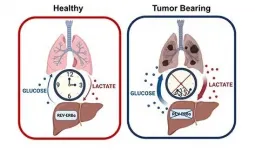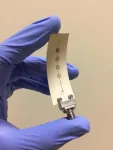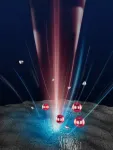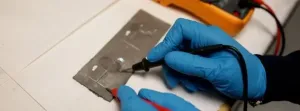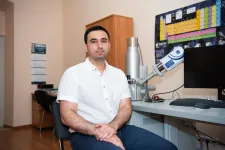Differences in human, mouse brain cells have important implications for disease research
2021-06-26
(Press-News.org) FINDINGS
A UCLA-led study comparing brain cells known as astrocytes in humans and mice found that mouse astrocytes are more resilient to oxidative stress, a damaging imbalance that is a mechanism behind many neurological disorders. A lack of oxygen triggers molecular repair mechanisms in these mouse astrocytes but not in human astrocytes. In contrast, inflammation activates immune-response genes in human astrocytes but not mouse astrocytes.
BACKGROUND
Although the mouse is a ubiquitous laboratory model used in research for neurological diseases, results from studies in mice are not always applicable to humans. In fact, more than 90% of drug candidates that show preclinical promise for neurological disorders ultimately fail when tested in humans, in part due to a dearth of knowledge about the differences in astrocytes and other brain cells between the two species.
Astrocytes are crucial to the development and function of the brain, and they play a substantial role in neurological disorders that, nonetheless, is not fully understood. Injury or infection causes astrocytes to go from a resting to reactive state in which they can aid in repairing the brain but can also increase detrimental inflammation.
METHOD
The scientists studied developing cells purified from mouse and human brain tissue, as well as cells grown in serum-free cultures from astrocytes selected using an antibody-based method developed by the study's corresponding author.
This technique was necessary because the conventional method of selecting astrocytes by growing them in serum -- a mixture of proteins, hormones, fats and minerals -- throws them into a reactive state similar to that caused by infection or injury. With the researchers' strategy, they were able to examine the astrocytes in a healthy state and in controlled conditions of oxidative stress, lack of oxygen and excessive inflammation.
IMPACT
The findings have implications for basic and translational research into neurological disorders such as Alzheimer's disease, Parkinson's disease and amyotrophic lateral sclerosis -- conditions whose underlying mechanisms include oxidative stress, lack of oxygen and excessive inflammation.
Because mouse astrocytes stand up to oxidative stress better, the authors suggest that laboratory models for neurodegeneration could be engineered to lessen that resistance, rendering them more human-like. In addition, the mouse astrocyte's facility for repair in response to lack of oxygen may suggest a new avenue of stroke research. And neuroscientists can take a more informed approach to preclinical studies by accounting for differences in response to inflammation between mouse and human astrocytes, as well as metabolic differences identified in the study.
INFORMATION:
AUTHORS
Jiwen Li, a UCLA postdoctoral scholar, is the study's first author, and the corresponding author is Ye Zhang, a UCLA assistant professor of psychiatry and biobehavioral sciences and a member of the Eli and Edythe Broad Center of Regenerative Medicine and Stem Cell Research at UCLA and the UCLA Semel Institute for Neuroscience and Human Behavior. Other co-authors are Lin Pan, William Pembroke, Jessica Rexach, Marlesa Godoy, Michael Condro, Alvaro Alvarado, Mineli Harteni, Yen-Wei Chen, Linsey Stiles, Angela Chen, Ina Wanner, Xia Yang, Daniel Geschwind and Harley Kornblum, all of UCLA, and Steven Goldman of the University of Rochester and the University of Copenhagen.
JOURNAL
The study is published online in the journal Nature Communications.
FUNDING
The study was funded by the ARCS Foundation, the National Institutes of Health, the Dr. Miriam and Sheldon G. Adelson Medical Research Foundation, the W. M. Keck Foundation, the Wendy Ablon Trust, a UCLA Broad Stem Cell Research Center Innovation Award and the Friends of the Semel Institute for Neuroscience and Human Behavior at UCLA.
[Attachments] See images for this press release:
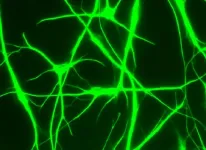
ELSE PRESS RELEASES FROM THIS DATE:
2021-06-25
Crude oil production and natural gas withdrawals in the United States have lessened the country's dependence on foreign oil and provided financial relief to U.S. consumers, but have also raised longstanding concerns about environmental damage, such as groundwater contamination.
A researcher in Syracuse University's College of Arts and Sciences, and a team of scientists from Penn State, have developed a new machine learning technique to holistically assess water quality data in order to detect groundwater samples likely impacted by recent methane leakage during oil and gas production. Using that model, the team concluded that unconventional drilling ...
2021-06-25
Irvine, CA - June 25, 2021 - New research from the University of California, Irvine reveals how the circadian regulation of glucose production in the liver is lost during lung cancer progression, and how the resulting increase in glucose production may fuel cancer cell growth.
The new study titled, "Glucagon regulates the stability of REV-ERBα to modulate hepatic glucose production in a model of lung cancer-associated cachexia," published today in Science Advances, illustrates how the circadian clock is regulated under conditions of stress such as during lung cancer progression and cancer-associated tissue wasting ...
2021-06-25
After suffering a stroke, patients often are unable to use the arm on their affected side. Sometimes, they end up holding it close to their body, with the elbow flexed.
In a new study, Northwestern University and Shirley Ryan AbilityLab researchers have discovered that, in an attempt to adapt to this impairment, muscles actually lose sarcomeres -- their smallest, most basic building blocks.
Stacked end to end (in series) and side to side (in parallel), sarcomeres make up the length and width of muscle fibers. By imaging biceps muscles with three noninvasive methods, the researchers found that stroke patients had fewer sarcomeres along the length ...
2021-06-25
ROCHESTER, Minn. -- Researchers at Mayo Clinic Cancer Center are studying a potential new chimeric antigen receptor-T cell therapy (CAR-T cell therapy) treatment for multiple myeloma. Their findings were published on Friday, June 24, in The Lancet.
"CAR-T cell therapy is a type of immunotherapy that involves harnessing the power of a person's own immune system by engineering their T cells to recognize and destroy cancer cells," says Yi Lin, M.D., a Mayo Clinic hematologist and lead author of the study.
Dr. Lin says the Food and Drug Administration approved ...
2021-06-25
The promise of 5G Internet of Things (IoT) networks requires more scalable and robust communication systems -- ones that deliver drastically higher data rates and lower power consumption per device.
Backscatter radios ? passive sensors that reflect rather than radiate energy ? are known for their low-cost, low-complexity, and battery-free operation, making them a potential key enabler of this future although they typically feature low data rates and their performance strongly depends on the surrounding environment.
Researchers at the Georgia Institute of Technology, Nokia Bell Labs, and Heriot-Watt University have found a low-cost way for backscatter radios to support high-throughput communication and 5G-speed Gb/sec data transfer using only a single transistor when previously ...
2021-06-25
Three years ago, Arthur Ashkin won the Nobel Prize for inventing optical tweezers, which use light in the form of a high-powered laser beam to capture and manipulate particles. Despite being created decades ago, optical tweezers still lead to major breakthroughs and are widely used today to study biological systems.
However, optical tweezers do have flaws. The prolonged interaction with the laser beam can alter molecules and particles or damage them with excessive heat.
Researchers at The University of Texas at Austin have created a new version of optical tweezer technology that fixes this problem, a development ...
2021-06-25
Want a smartphone that stretches, takes damage, and still doesn't miss a call?
A team of Virginia Tech researchers from the Department of Mechanical Engineering and the Macromolecules Innovation Institute has created a new type of soft electronics, paving the way for devices that are self-healing, reconfigurable, and recyclable. These skin-like circuits are soft and stretchy, sustain numerous damage events under load without losing electrical conductivity, and can be recycled to generate new circuits at the end of a product's life.
Led by Assistant Professor Michael Bartlett, the team recently published its findings in END ...
2021-06-25
Scientists from the National University of Science and Technology "MISIS" (NUST MISIS) in cooperation with their colleagues from the Siberian Federal University and the Research and Production Centre of Magnetic Hydrodynamics (Krasnoyarsk) have developed a technology for producing a unique heat-resistant aluminium alloy with improved durability.
According to the researchers, this new alloy could replace more expensive and heavier copper conductors in aircraft and high-speed rail transport. The study results were published in an interdisciplinary, peer-reviewed journal, the Materials Letters. (https://www.sciencedirect.com/science/article/abs/pii/S0167577X2100896X)
Researchers have created a method for producing ...
2021-06-25
Night and day, oil tankers, yachts and cargo ships stacked with shipping containers ply the 80-kilometer (50-mile) waterway through the jungles of Panama between the Atlantic and the Pacific Ocean: about 40 ships every 24 hours. But even though the Canal is fed by freshwater rivers that empty through the locks on each end, a system that generally prevents fish and smaller marine invertebrates from hopping from ocean to ocean, some still manage to get through, clinging to the hulls of ships. Other invading species arrive from far-flung ports, dumped with ballast water as ships prepare for transit.
"Panama is a major shipping hub that provides amazing opportunities to test key ideas about marine invasions by studying ...
2021-06-25
A team of engineers and clinicians has developed an ultra-thin, inflatable device that can be used to treat the most severe forms of pain without the need for invasive surgery.
The device, developed by researchers at the University of Cambridge, uses a combination of soft robotic fabrication techniques, ultra-thin electronics and microfluidics.
The device is so thin - about the width of a human hair - that it can be rolled up into a tiny cylinder, inserted into a needle, and implanted into the epidural space of the spinal column, the same area ...
LAST 30 PRESS RELEASES:
[Press-News.org] Differences in human, mouse brain cells have important implications for disease research


